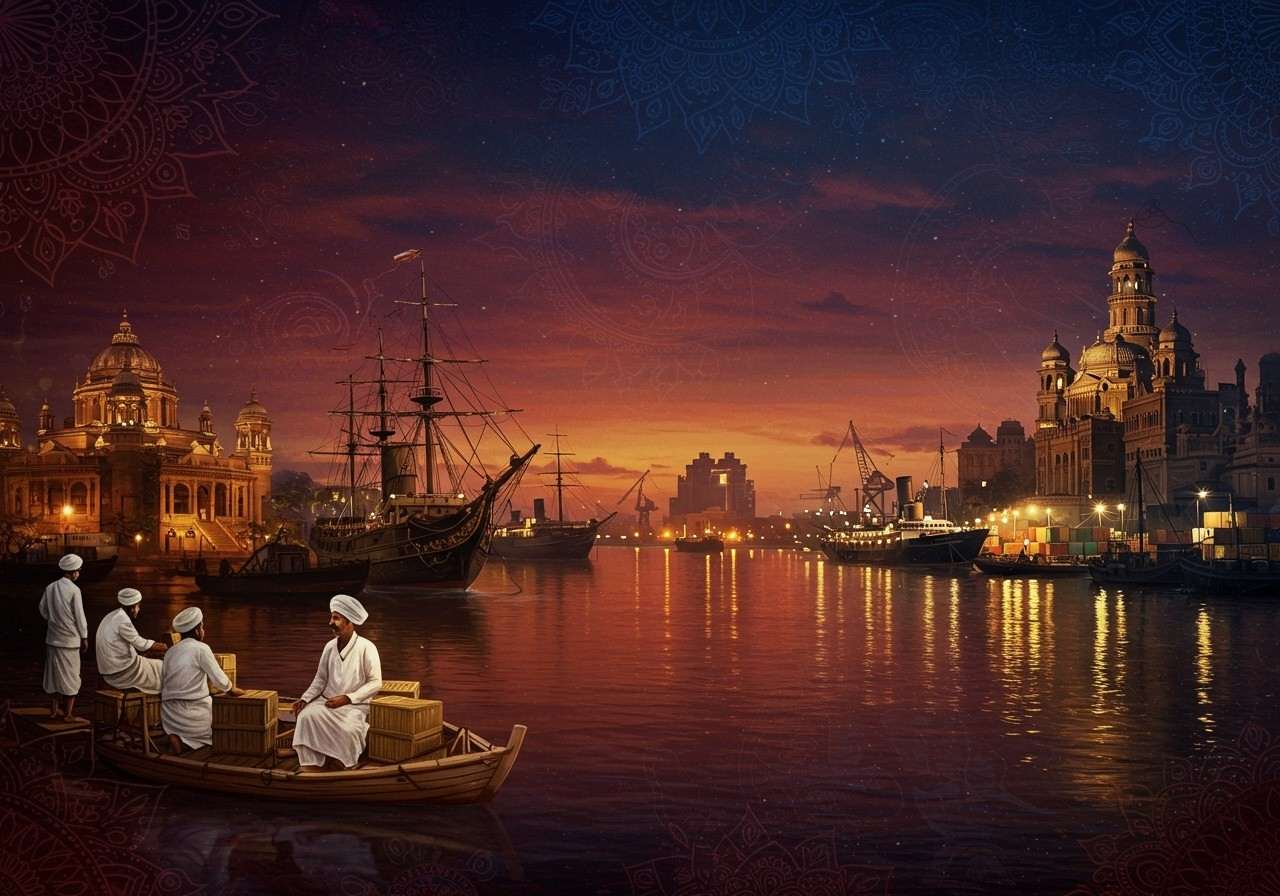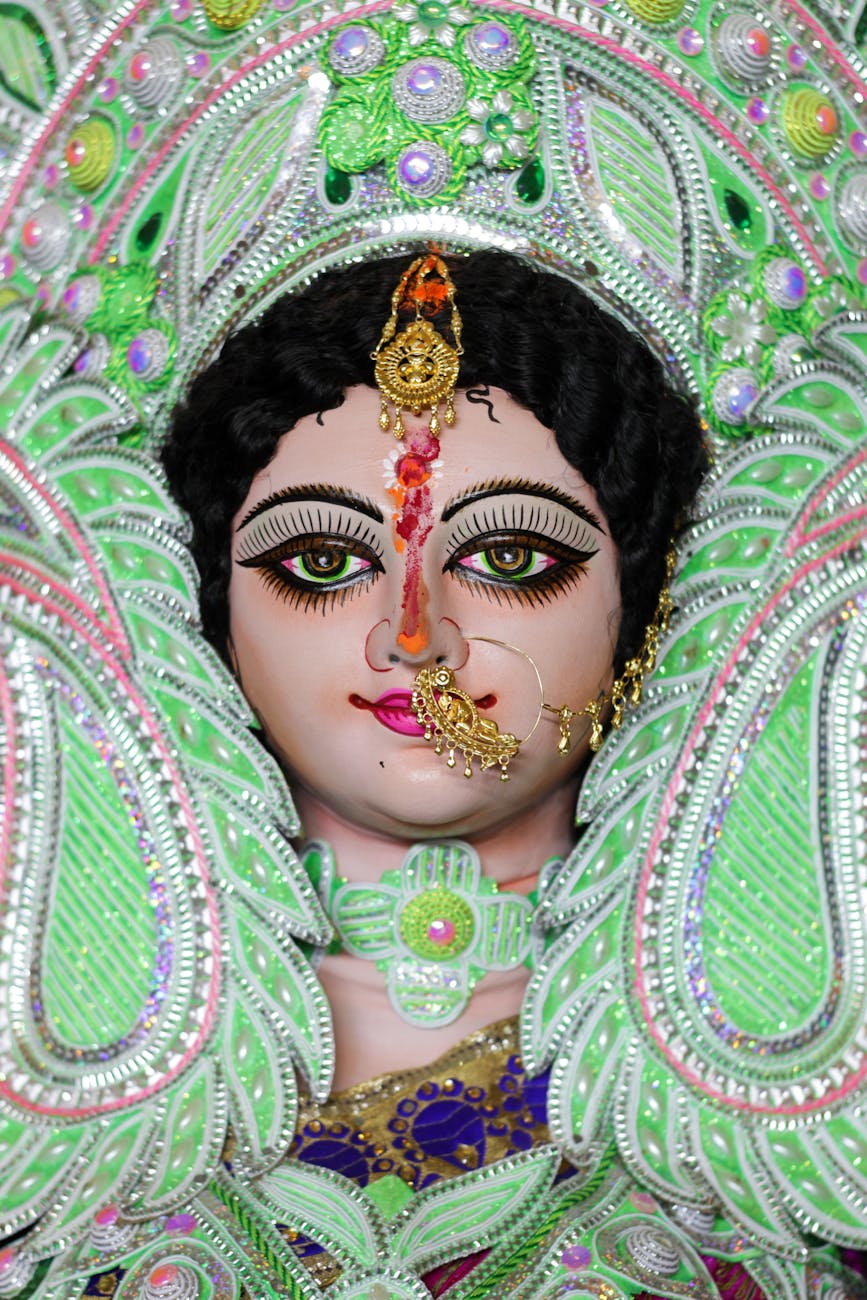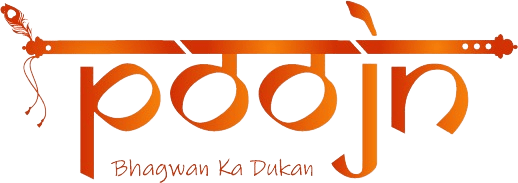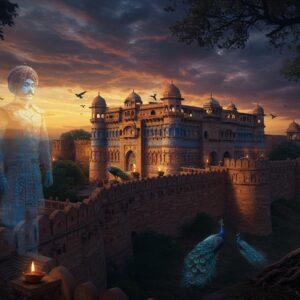
Along the banks of the mighty Hooghly River, there stands a silent witness to centuries of history, trade, and cultural fusion. We know it today as the Syama Prasad Mookerjee Port (SMPK), but for generations, it has simply been the Kolkata Port. This is more than just a place where ships dock; it’s the very heart from which the city of Kolkata drew its lifeblood, a gateway that connected India to the world and shaped our nation’s maritime story.

A Walk Through History: The Birth of a Legacy
The story of this port begins long before the British officially established it. Its roots trace back to the Mughal era when Emperor Aurangzeb first granted trading rights to the British. It was here, in 1690, that Job Charnock of the East India Company established a trading post, planting the seeds of what would become a bustling metropolis. Officially established in 1870, the Kolkata Port was the first major port built by the British government in India.
In the 19th century, it wasn’t just a port; it was the premier port of British India. Imagine the scene – towering ships with sails billowing, carrying textiles, spices, and dreams across the oceans. It was so crucial that in the 1920s, it handled nearly half of India’s entire trade. This riverine port, located 203 kilometres from the sea, became the lifeline for a vast hinterland, a true gateway to Eastern India.
The Economic Heartbeat of Eastern India
For centuries, the port has been a powerhouse of commerce. From the golden fibres of jute to the fragrant leaves of Assam tea, countless treasures have passed through its docks, sailing to distant shores and fueling India’s economic journey. Today, it stands as a modern marvel with two distinct dock systems – the Kolkata Dock System (KDS) and the Haldia Dock Complex (HDC), ready to handle everything from massive containers to liquid cargo.
It continues to be a crucial pillar of our economy, forging new international partnerships and embracing modern technology to keep the wheels of trade turning. The port’s ability to adapt and grow shows its unwavering importance in the global marketplace.
A Confluence of Cultures
But the legacy of the Kolkata Port isn’t just about money and cargo. It’s a beautiful story of people. It was a melting pot where cultures from across the globe met and mingled. The British, Armenians, Chinese, and Jewish communities, among others, arrived here, bringing their traditions, food, and faith. They left an indelible mark on Kolkata, making it the vibrant, cosmopolitan city it is today.
Walk through the areas near the port, and you’ll see grand colonial buildings, serene synagogues, and ancient churches standing side by side. This cultural exchange is the soul of Kolkata, a city that celebrates diversity with open arms. It is this very spirit of celebration that one can feel during the grand festivities of Durga Puja in Kolkata, a spectacle of art, faith, and community.
Facing the Tides of Change: Modernisation and Challenges
Like any grand old institution, the port has faced its share of challenges. The constant battle with siltation in the Hooghly River requires tireless effort to keep the channel navigable for large vessels. Yet, it has always risen to the occasion. Today, the port is undergoing significant modernization, connecting to National Waterways that reach North India, Bangladesh, and Assam.
With massive investment commitments secured in recent times, the Syama Prasad Mookerjee Port is not just preserving its history; it is charting a bold new course for the future, ensuring its legacy will continue for generations to come.
Honouring Our Maritime Traditions with Poojn.in
The Kolkata Port is a powerful symbol of our nation’s journey. It represents trade, resilience, and the beautiful coming together of cultures. At Poojn.in, we believe in cherishing this legacy by honouring the traditions and rituals that are deeply connected to our maritime history. Many ceremonies bless new ventures, safe travels, and prosperity, much like the prayers that must have been offered for the ships sailing from this very port.
To help you connect with these timeless practices, we offer a heartfelt selection of authentic ritual items.
- Authentic Puja Samagri: For any ceremony to be complete, you need pure and authentic ingredients. Our collection of Pooja Samagri includes everything from sacred threads to pure incense, ensuring your prayers are offered with the utmost devotion and correctness.
- Divine Holy Food: Offerings are a central part of our rituals, symbolising gratitude and devotion. Explore our range of Holy Food, including traditional sweets and grains like Desi Bengali Khoi (Puffed Rice), perfect for prasad.
- Beautiful Decorative Items: The sanctity of a ritual is enhanced by a beautiful environment. Adorn your sacred space with our exquisite Decorative Items, such as the elegant Handi Urli Set, to create an atmosphere of peace and divinity.
Choosing Poojn.in means choosing authenticity and convenience. We source our products from trusted artisans, ensuring you receive items that respect tradition. For any help, you can always call us at 03369029784 or send a message on WhatsApp at 9476142738.
Exploring Common Curiosities About the Kolkata Port
Many often ask about the true historical significance of the Kolkata Port. Established officially in 1870, it is one of India’s oldest operational ports. It was the commercial cornerstone for British India, playing a pivotal role in global trade routes and profoundly shaping India’s economic and maritime history for over a century.
What is its contribution to global trade today? The port remains a vital economic hub for Eastern India. It facilitates the movement of a diverse range of cargo, from iron ore and tea to textiles and machinery, connecting our country’s heartland to international markets and fostering robust trade relationships across the globe.
How has the port evolved through the years? From a simple set of jetties in 1870, the port has transformed into a modern complex with advanced infrastructure. It has continually upgraded its facilities, adopted new technologies, and expanded its capacity to meet the ever-growing demands of international shipping and commerce.
People also wonder about its impact on the local economy. The port is a major economic driver for the entire region. It generates thousands of jobs, supports countless ancillary businesses, and is fundamental to the prosperity and development of West Bengal and its neighbouring states.
A Legacy Sailing Towards the Future
The Kolkata Port is more than just infrastructure; it is a living legend. Its waters hold stories of ambition, struggle, and triumph. It has nurtured economic growth, cradled diverse cultures, and stood as a proud emblem of India’s maritime prowess. As it embraces the future with innovation and strength, the port continues to be the anchor of India’s dreams, forever securing its place in our hearts and in the annals of global maritime history. Its journey is a powerful reminder of where we come from and the great voyages that still lie ahead.


